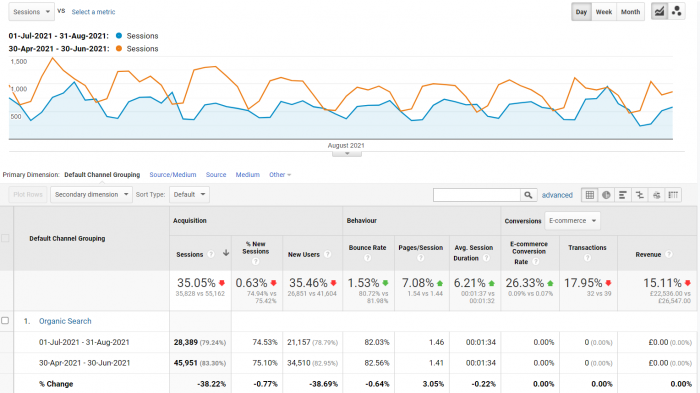No business wants a website that looks dated – even if the content on the website is popular, interesting and engaging, visitors in all industries expect a certain experience when they visit a website. Failing to deliver a good user experience could lose your business customers. So it’s not surprising that companies want the best-designed website possible to attract and retain potential customers. The problem is that what some web developers and web designers understand by an effective website isn’t always a website that can be easily found online. And if people can’t find your website online then it doesn’t matter how good it looks or how useful your content is or how stunning your products – it simply won’t attract enough visitors.
I’ve nothing against web designers and developers (I used to be a developer myself for several years) but I am a firm believer that no website should be redesigned without the input of the digital marketing team because an effective website is most certainly not all about aesthetics and good branding, although they are, of course, an important part of the mix.
I’ve recently been involved with 2 businesses that have had their websites redesigned and fallen foul of several issues, some obvious and some less so. But for both, the outcome was a drastic fall in their search rankings and consequent loss of visitors to their websites and ultimately a loss of business. The image below shows a real-life fall of 35% in visitor numbers over a 2-month period due to a website redesign. So I’d like to share 3 potential pitfalls…
Changing The URL Structure
The URL structure is not just about good navigation around the website, it is also an indicator to Google and other search engines as to which pages are the most important. As an example, consider a consultancy firm that specialises in management consultancy but also provides financial and business consultancy services. They might have a structure with these 3 URL examples:
mydomain.com/management-consultancy-service
mydomain.com/services/consultancy/financial
mydomain.com/services/consultancy/business
The first of these URLs (using the above structure) would be considered most important across the whole website and likely to appear higher in the search rankings. If, however, during a redesign the web designer decides it would make more sense to standardise the URL structure then it might be changed to:
mydomain.com/management-consultancy-service
mydomain.com/financial-consultancy-service
mydomain.com/business-consultancy-service
But the financial and business consultancy pages will now be considered just as important as the management consultancy page and that could have a negative impact on the rankings of that page. In the worst-case situations, it can also lead to cannibalisation.
Removing Valuable Content
In order to make web designs clear and uncluttered web designers may recommend removing sections of content or even whole pages. Whilst removing pages with little content of any value is a good idea, it is never a good idea to remove valuable content from a page. Where there is a significant amount of content on a page (anything from 1,000 words upwards) then that content is contributing towards the search rankings and top-ranking pages will often have several thousands of words of content on them.
There are a number of ways to use design features to retain the content but also provide an uncluttered design. The most common of these is to use tabs or accordions, which enable search engines and human visitors to see the content when they want to.
Ignoring Page Speed/Experience
Since the summer of 2021 page experience has become a significant ranking factor, especially in relation to the Core Web Vitals metrics. These 3 standard metrics determine how quickly a visitor can see and interact with any page on a website and are impacted by the way a website is built. If, for instance, a website is redesigned in WordPress with multiple plugins it is likely to struggle to meet the minimum standards for Core Web Vitals. Similarly if a website uses overly large images the same is likely to be true.
These potential pitfalls are far from the only things that can go wrong during a website redesign but highlight the importance of involving someone with technical digital marketing experience in every website redesign.




